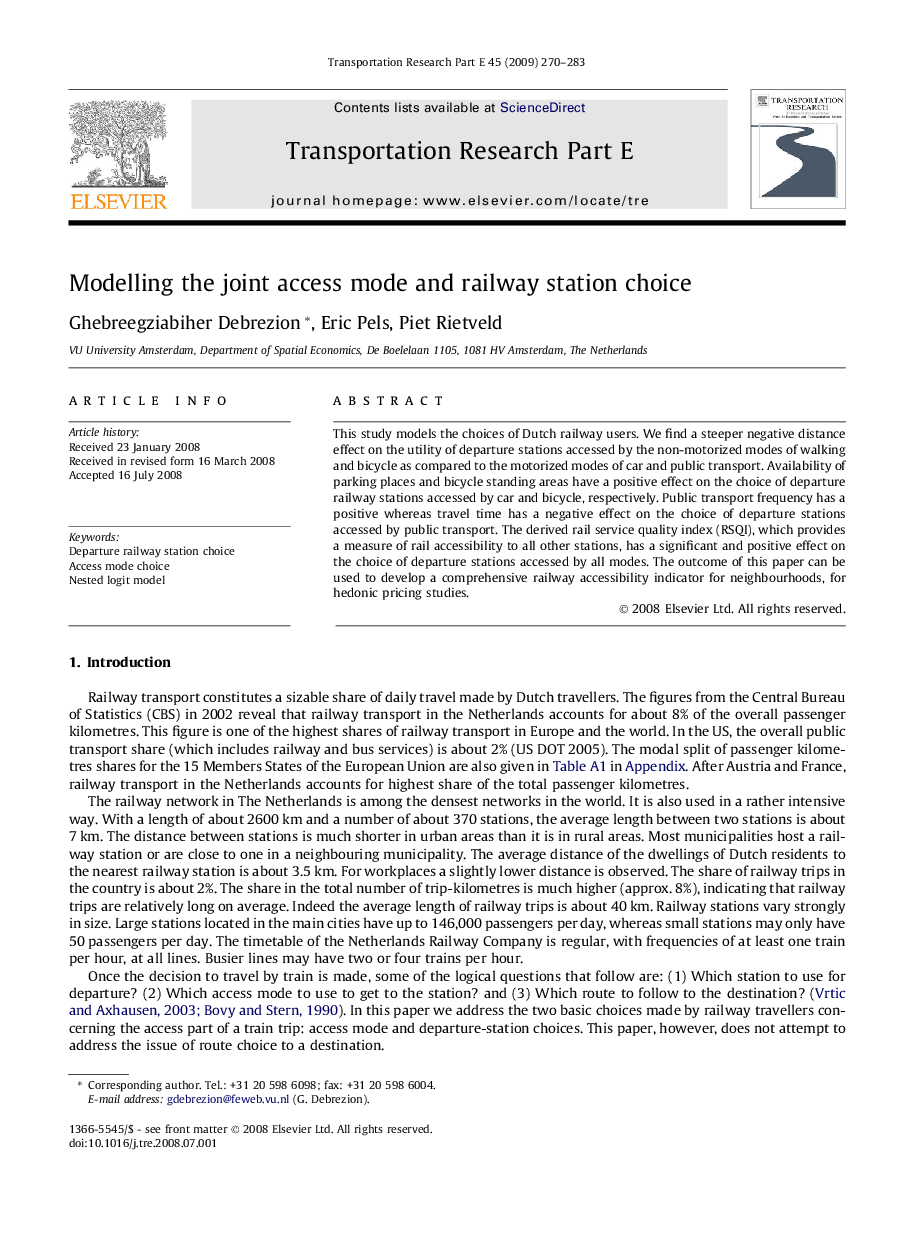| Article ID | Journal | Published Year | Pages | File Type |
|---|---|---|---|---|
| 1023904 | Transportation Research Part E: Logistics and Transportation Review | 2009 | 14 Pages |
This study models the choices of Dutch railway users. We find a steeper negative distance effect on the utility of departure stations accessed by the non-motorized modes of walking and bicycle as compared to the motorized modes of car and public transport. Availability of parking places and bicycle standing areas have a positive effect on the choice of departure railway stations accessed by car and bicycle, respectively. Public transport frequency has a positive whereas travel time has a negative effect on the choice of departure stations accessed by public transport. The derived rail service quality index (RSQI), which provides a measure of rail accessibility to all other stations, has a significant and positive effect on the choice of departure stations accessed by all modes. The outcome of this paper can be used to develop a comprehensive railway accessibility indicator for neighbourhoods, for hedonic pricing studies.
